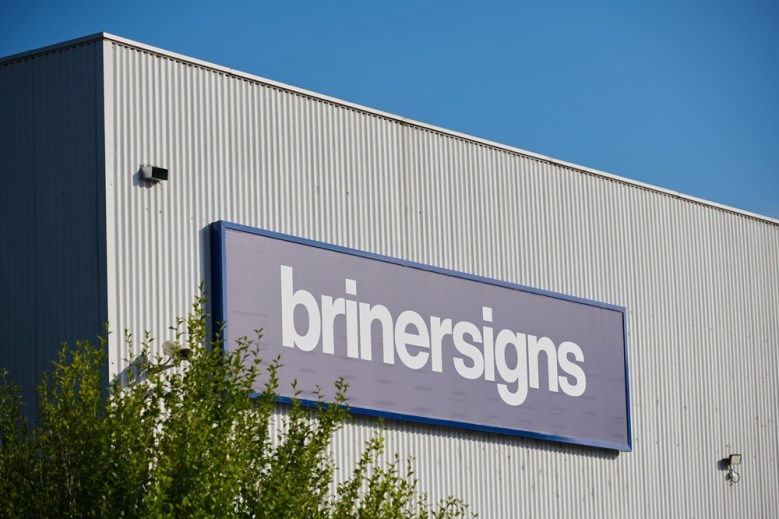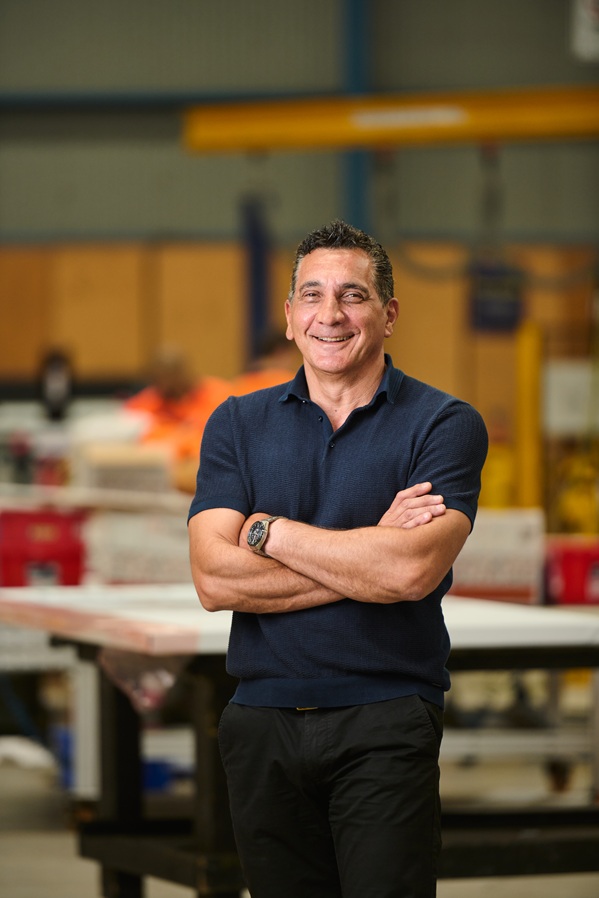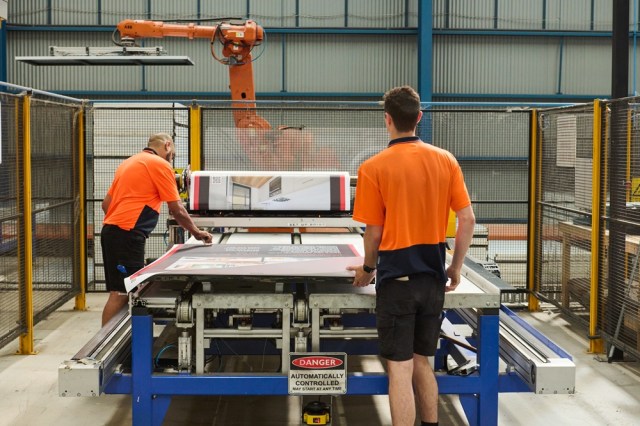
This article was first published in the June issue of ProPrint magazine.
Briner Signs, a prolific player in Victoria’s real estate and commercial marketing scene, has celebrated a monumental milestone – chalking up 80 years of operation.
The business, founded in 1945 by sign writer, Les Briner, still carries his name to this day, servicing the Victorian marketing scene with outdoor, point-of-sale, real estate, and commercial advertising solutions.
It has been behind some of the most recognisable brands in the state including Crown Casino, Mercedes Benz, and, albeit briefly, a bold project for Niki Lauda’s airline, stringing up a banner on the Rialto building to literally fly in the face of then Melbourne Grand Prix sponsor, Qantas.
“Niki Lauda came to us and said, ‘I want to put a big sign on the Rialto’,” reflects Briner Signs managing director, Con Tsakonas.
“We said we won’t be able to do it, and he said, ‘no problem, I know the owner’. So, he got permission to put a Lauda Air sign wrapped around the Rialto. I think we wrapped it on a Monday, and the Grand Prix started on Thursday.
“Qantas obviously wasn’t happy, but Lauda got his sign up there for a couple of weeks.”
The bold job for an F1 legend is one of several anecdotes Tsakonas can share following his more than 30 years at the business, beginning as a contractor before eventually becoming managing director.
“The technology we have now, in regard to production and installation, has come a really long way. It is a far cry from when I joined, in quite a short amount of time,” he said.

Briner began with its sole proprietor until the business was purchased in the mid-to-late 1940s by Joe Lombard in partnership with Brian Stegley, following their return from military service.
With Lombard managing the day-to-day operations of Briner, Stegley served as director. At the same time, he was developing noted manufacturing business, Stegbar.
Under Stegley, Briner operated under The Stegbar group of companies, which was floated as a public company at the time. With financial support, Briner carved out the major share of the real estate sign industry.
“We do specialise in the real estate industry, and have for a long time, but essentially the business can be split into two – real estate, and commercial – where we’ll supply businesses and commercial signs which advertise, identify, and promote businesses and products,” Tsakonas said.
“Briner stepped into the real estate side of things under Brian McNamara where it became the bread and butter of the business.
“Brian brought me in, and over time, the business has evolved in line with technology developments – and that has given us the capacity to deliver on commercial production, as well as continuing to see where we can improve our real estate side.
“A lot of our commercial work complements our real estate clients so it’s quite cohesive between the two.”
Under Tsakonas’ leadership, Briner has become a pioneer in the industry, implementing custom robotics to assist in production, cutting edge printing hardware, and intuitive online platforms to assist in every step of the customer journey – from enquiry to installations – by Briner’s fleet of drivers.
“I would say we have spent in excess of $10 million over the past 15 years on continuous improvement and automation,” Tsakonas told ProPrint.

“In 2000, we were warned that the internet was going to change the whole approach to real estate. I remember getting calls from a couple of agents asking me how I felt about the internet, and I said, ‘I don’t know much about it’. They told me they wouldn’t need sign boards anymore and that my business was finished. That year, business doubled because the internet pushed us to go digital and build our own online system.
“The system we built removed a lot of the manual processes, which then led us to look at other manual processes within our operations. It steered us to then introduce automation and robots into the production process and by doing that we eliminated manual handling processes from 10 people to two.
“We got more efficient, we got quicker, smarter, and we built a better-quality board. From there, the company progressed further.
“The investment has matured now, but there was high risk involved at the time of introducing those processes. We were building automation that had never been built before.
“Looking back, we were sort of a bit naïve with not only the investment, but the financial risk we were taking as well. I think a bit of naïvety has been key to our success – some might call it stupidity – but it paid off for us in the end.”
Briner Signs is understood to hold around 18 per cent of the real estate board market in Melbourne, with about 40,000 real estate signs produced a year.
“We do around 300 boards a day, and instead of working 24 hours around the clock, we’re working seven hours – we’ve tripled our business without having to double our staff. The workplace environment’s better, there’s less repetitive work for our staff, and they’re getting trained and upskilled working with the technology,” Tsakonas said.
Briner also recently tripled its capacity for output following the installation of a new swissQprint Kudu UV LED flatbed printer.
Purchased at drupa last year, the printer is the second of its kind in Victoria and one of four currently in Australia.
Since its installation late last year, which was managed by Pozitive sign & graphic supplies, it has already had a measurable impact on Briner’s capacity to produce its broad product range en masse.
Briner’s new printer allows for printing up to 304 square metres per hour, a marked improvement from its previous machine which reached a max of 50 sqm per hour.
It features 10 colour channels, a 3.2m by 2m print area, 30 print heads and a 1350 DPI maximum resolution. Additionally, Briner now has capacity to create vibrant signage utilising neon inks, previously unavailable to clients.
Briner’s new printer will also fast track the distribution of a recently launched product offering set to provide a solution for ‘one and done’ signage.
“We’ve just launched a new product, a 600mm by 450mm A-frame which was designed to allow for foam board inserts, eliminating the ‘stripping’ process and removing double handling. The client can change the message on the A-frame without needing to return it to Briner and can have multiple designs for single A-frame,” Tsakonas said.
Looking to the future, succession planning is on the cards for Tsakonas.
“I do want to eventually phase myself out, and not because I can’t do it, but I think you need young blood to reenergise the business. I’ve always been taught that you must leave something in the company for the next generation,” he said.
“When I look back at the history of the business, we didn’t want to be the biggest; we wanted to be the best.
“The argument will always be, is the real estate industry going to need real estate boards? The internet said it wouldn’t, but it has done the opposite. Hopefully, I can leave a legacy that someone else will want to take for the next 80 years.
“We look forward to bringing the 80 years of experience behind us to the forefront with the added benefit of innovative technology.”
Comment below to have your say on this story.
If you have a news story or tip-off, get in touch at editorial@sprinter.com.au.
Sign up to the Sprinter newsletter


